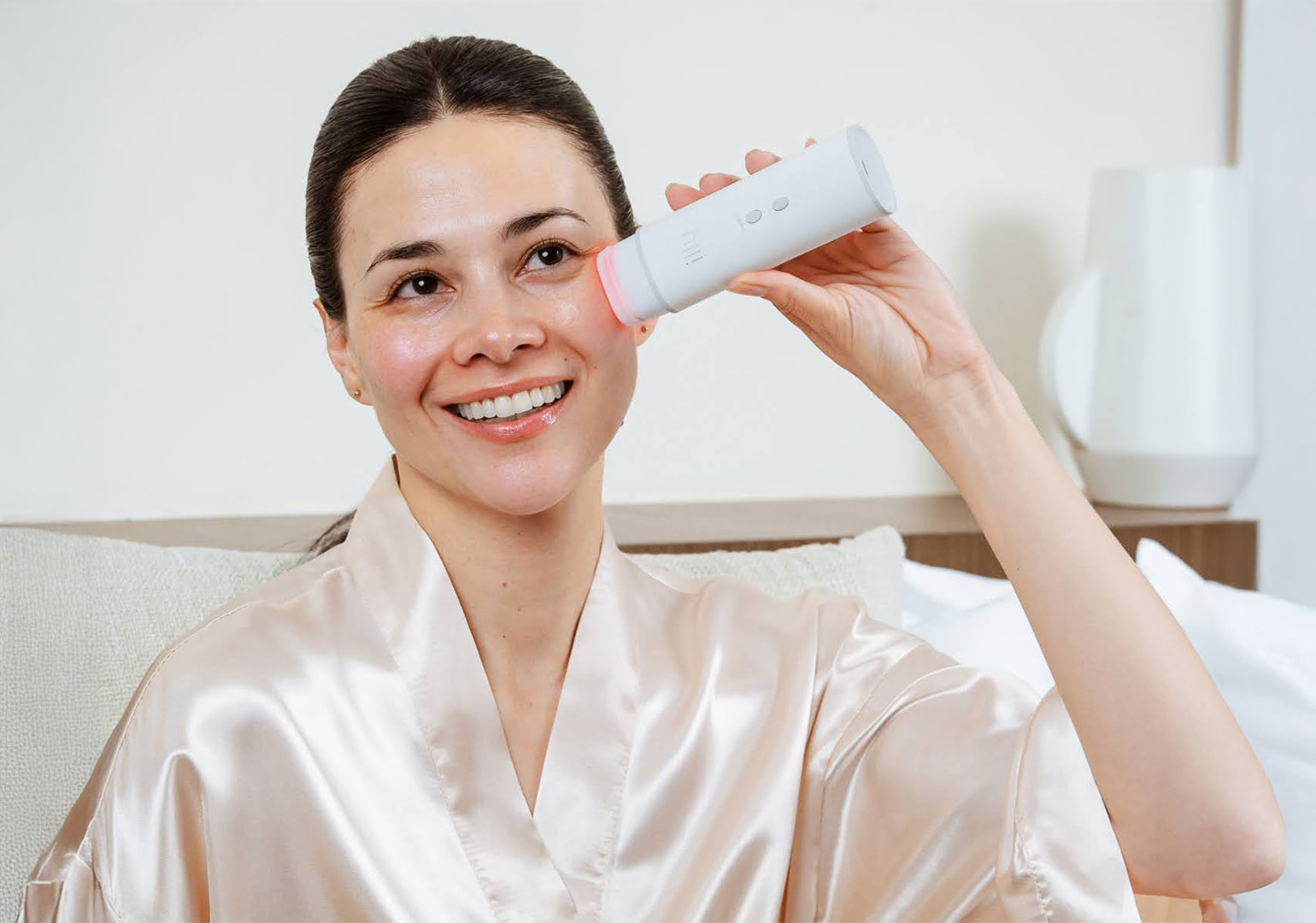Author: Andrea Winters
Photo Courtesy of: illu
As interest in home-based wellness and skincare routines rises, the gap between consumer expectations and available technology continues to narrow. With global sales of beauty tech products expected to exceed $9 billion by 2025, consumer demand is shifting toward non-invasive tools that combine convenience with clinical-grade functionality.
The illu Facial Toner enters this space not as a gadget for superficial use, but as a rigorously designed skincare tool grounded in medical and physiological principles. Developed to provide facial contouring, improved skin elasticity, and enhanced circulation, the device incorporates neural tapping and dual-light therapy. Its selling point is not the novelty of the device, but the layered science behind it.

A Triad of Therapies: Tapping, Red Light, and Blue Light
The core of the device is in its integration of three modalities: neural tapping technology, red light therapy, and blue light therapy. Neural tapping mimics rhythmic manual massage techniques commonly used in Korean skincare, targeting lymphatic drainage and microcirculation. This function helps reduce puffiness and supports absorption of skincare products.
“Most consumers don’t realize that poor lymph flow and stagnant circulation contribute to many common skin complaints,” said Sloane Carter, founder and CEO of illu. “Our tapping mechanism is designed to activate these pathways without relying on aggressive or abrasive treatments.”
Red light therapy, operating within the 620–750 nanometer wavelength range, is associated with stimulation of fibroblasts—cells responsible for collagen production. Collagen, along with fibrillin and decorin, is essential for maintaining skin firmness. Clinical studies have shown that red light therapy can improve dermal density and reduce the appearance of fine lines when used consistently over several weeks.
Blue light therapy, with shorter wavelengths around 415 nanometers, primarily targets surface-level bacteria and inflammation. Often used to treat acne and discoloration, this component serves as a complement to the red light’s regenerative properties. The pairing of these two wavelengths with tapping technology makes the illu Toner a multi-dimensional tool, not a single-function device.
User Experience Meets Clinical Logic
Designing a beauty tool with scientific backing is one challenge. Creating a product that integrates seamlessly into daily routines without requiring medical oversight is another. illu’s device aims to make high-grade skincare technology accessible without diluting its intended outcomes.
To that end, the device includes three interchangeable heads—Smooth, Wave, and Point—each tailored to different areas and needs. The Wave head, for instance, aids serum penetration and deeper muscle stimulation, while the Point head targets blemishes and fine lines. Users are instructed to apply a Hydro Activator Gel before using the device, which contains hyaluronic acid, aloe vera, and vitamin E to support conductivity and skin hydration.
“From the start, we made it a priority to design for usability. If someone can’t use it intuitively, then the science doesn’t matter,” Carter said. “Our goal was to strip away the intimidation factor, not the technical sophistication.”
Clinical validation has been a focal point for illu’s development cycle. Internal studies have measured increases in dermal protein markers following repeated use of the device over several weeks. While larger peer-reviewed trials remain limited, preliminary results align with broader dermatological research on the effectiveness of red and blue light wavelengths in stimulating cellular regeneration and improving skin tone.

Meeting the Market’s Appetite for Substance
The beauty industry has come under increasing scrutiny for marketing claims that lack empirical support. Devices like illu’s Facial Toner represent a shift toward consumer tools that offer both efficacy and transparency. Consumers—particularly those aged 30–55—are more likely to invest in products that are science-led and provide measurable outcomes over time.
The beauty industry is facing increasing demand for transparency and efficacy, with consumers growing more discerning about the tools they bring into their routines. Rather than settling for products driven by marketing hype, today’s skincare buyers are gravitating toward solutions that mirror professional-grade results—without requiring clinical visits. This shift is especially notable among users who prioritize evidence-based approaches, longevity in results, and multifunctional tools that address more than surface-level concerns.
The Facial Toner’s multipurpose functionality speaks to this trend, especially among users managing early signs of aging or recovering from stress-related skin issues. By addressing structural concerns—such as collagen depletion and fluid retention—rather than cosmetic masking, the device aligns with a longer-term view of skin health.
“We’re not here to offer miracles,” said Carter. “What we are offering is a tool that works with your skin biology, not against it.”

Outlook for At-Home Skincare Technology
As the skincare market continues to fragment into niche verticals—such as anti-aging, acne care, and holistic wellness—devices like illu’s Facial Toner reflect a broader recalibration of consumer priorities. The device is less about chasing trends and more about responding to a user base that wants evidence-based results without clinical dependency.
The move toward at-home beauty tech isn’t likely to slow down. With the market for non-invasive facial rejuvenation projected to grow at 12.1% annually through 2030, tools that offer a combination of design precision and therapeutic benefit will increasingly shape the sector.
While it remains to be seen how illu’s product line improves, the science underpinning its flagship device sets a new bar for what consumers can expect from skincare technology they use in their own homes.
S


















